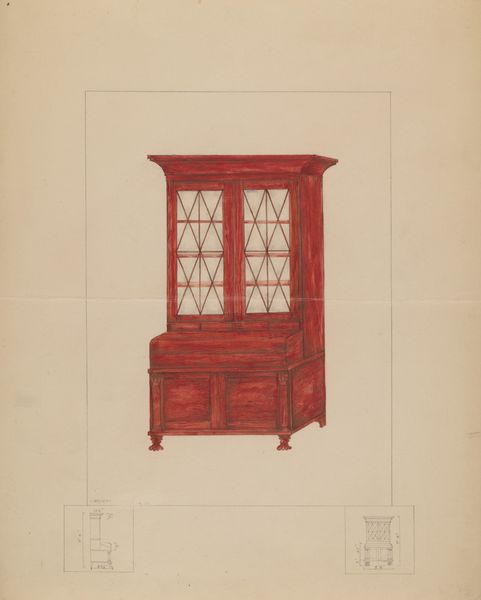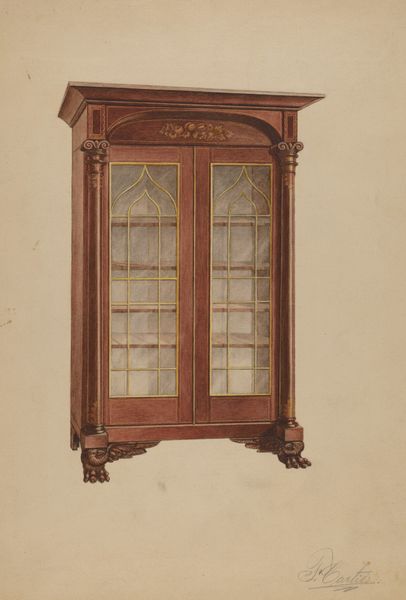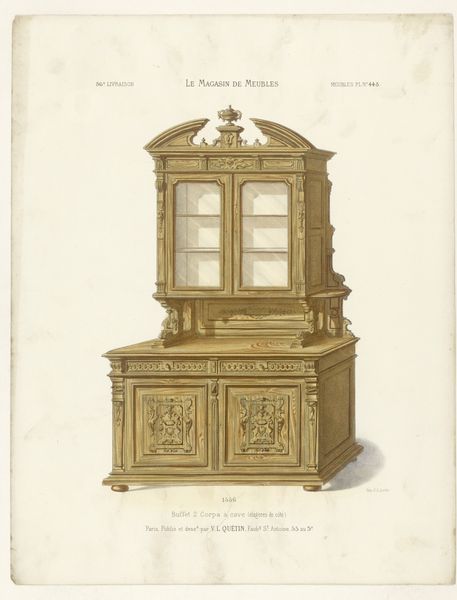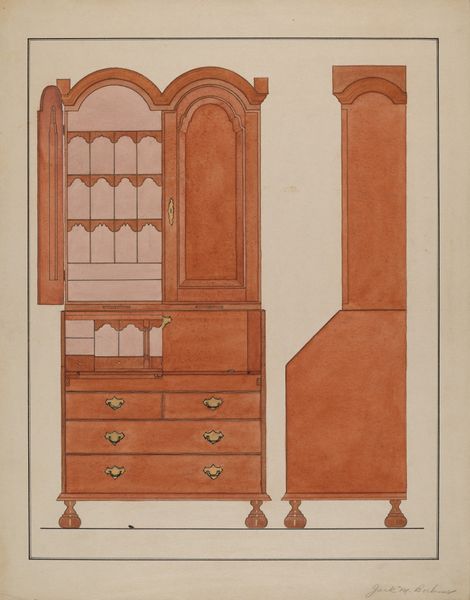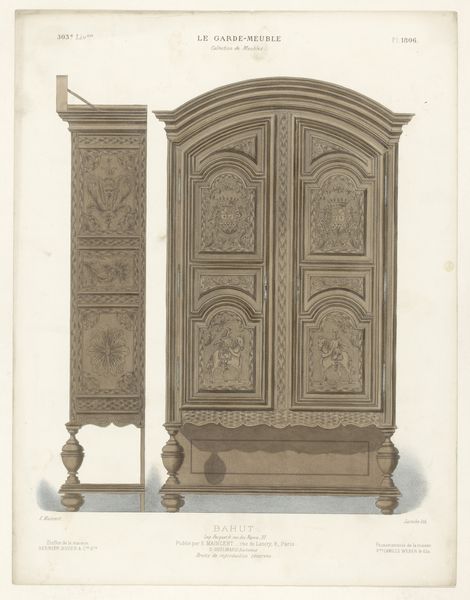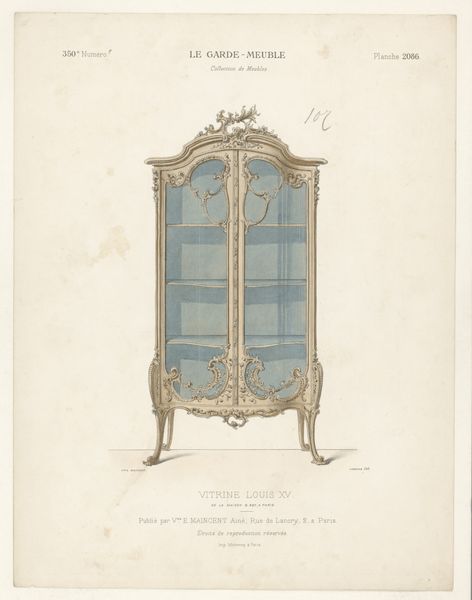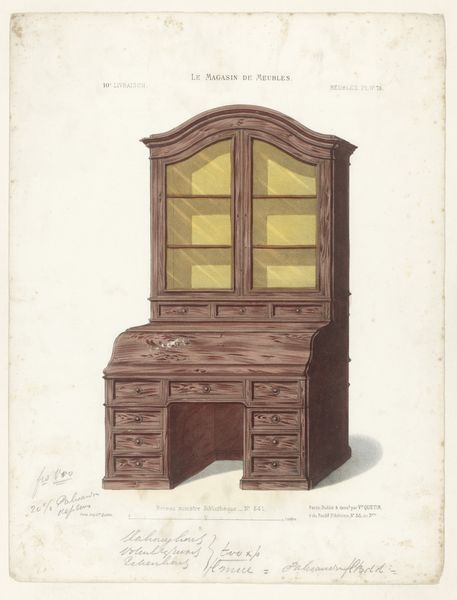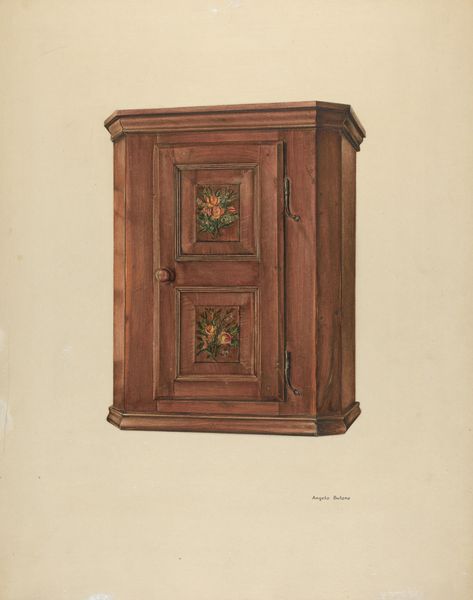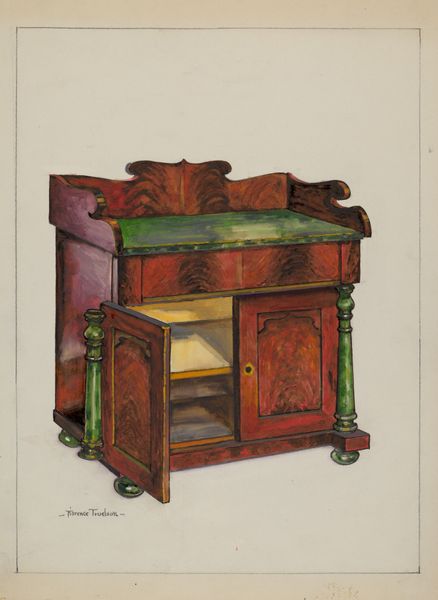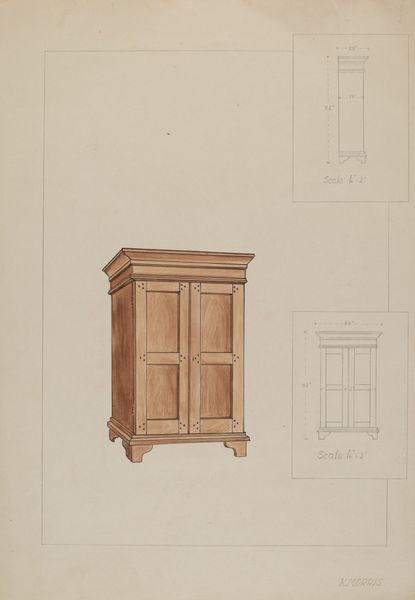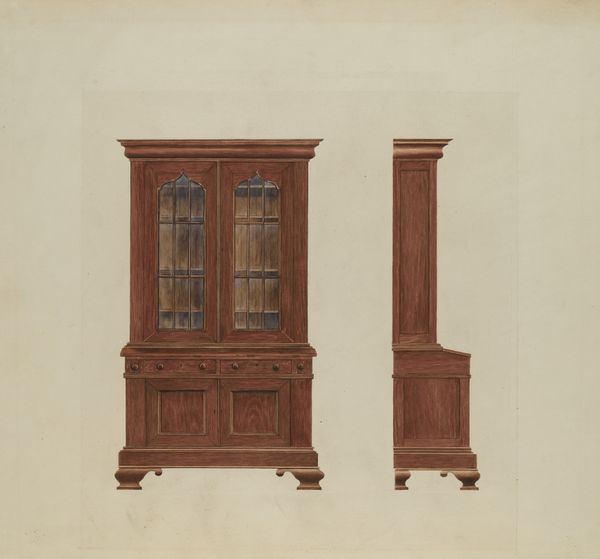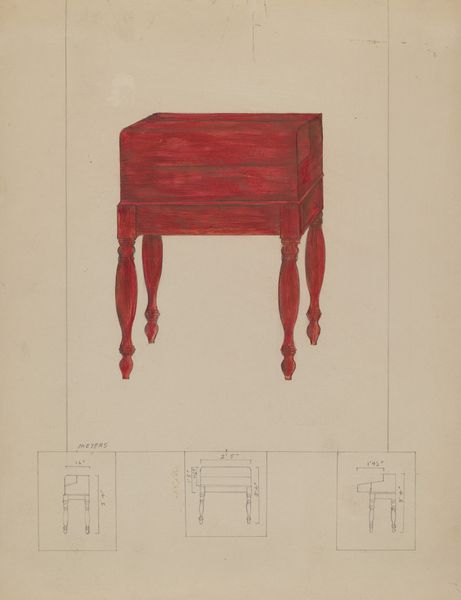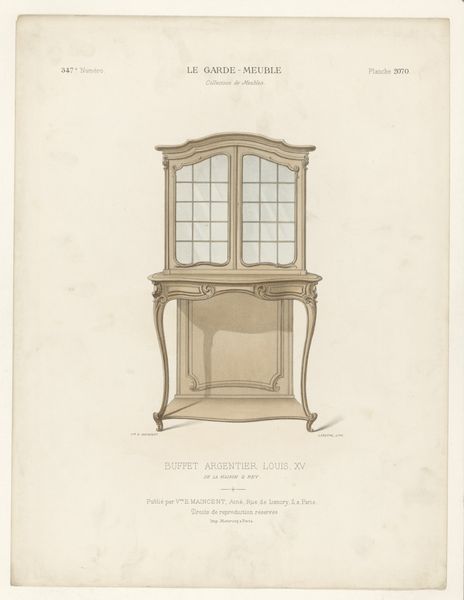
drawing, watercolor
#
drawing
#
watercolor
#
watercolor
Dimensions: overall: 30.4 x 22.8 cm (11 15/16 x 9 in.)
Copyright: National Gallery of Art: CC0 1.0
Editor: Here we have Henry Meyers's "Secretary," a watercolor and drawing piece from between 1935 and 1942. I’m struck by the rigidity and the bold red color. It almost feels like a symbol rather than just a depiction of furniture. How do you interpret this work? Curator: It's fascinating how a seemingly simple object can resonate with deeper meanings. The color, first of all, that deep, almost blood-red, what does it evoke for you? Think about how colors are coded and carry emotions across cultures and time. Is this a sacred color? A warning? Editor: I hadn’t really thought about the color symbolism specifically. Maybe a little of both? I mean, it is quite intense. It grabs your attention, almost demanding respect, but the redness, yeah, it's a little alarming. Curator: Precisely. And consider the form. It’s architectural in its rigidity, a structure designed to contain, protect, and organize knowledge. The "secretary" wasn’t just a desk, but a command center, a place of power for the written word, for administration. Does the artist elevate this household object to communicate concepts beyond the purely functional? Editor: That's a great point. The formal depiction certainly emphasizes its power, more so than, say, its utility. The symmetry, too, gives it a sort of official look. Curator: Consider, too, the glass-paned doors. What do they imply? Is it about the transparency of knowledge or perhaps the careful curation and preservation of certain ideas? Or even the delicate and precious nature of what is being stored and controlled? Editor: Wow, I really hadn't thought about that aspect either, I was stuck on seeing the work in isolation! Seeing how the details add up and hint at broader, almost conceptual meanings, has made this work click for me. Curator: Indeed. It is a lesson to never underestimate the cultural memory embedded within visual forms. We’ve only scratched the surface, but isn't it fascinating how even something like a piece of furniture, rendered in a particular way, can be so profoundly symbolic?
Comments
No comments
Be the first to comment and join the conversation on the ultimate creative platform.
